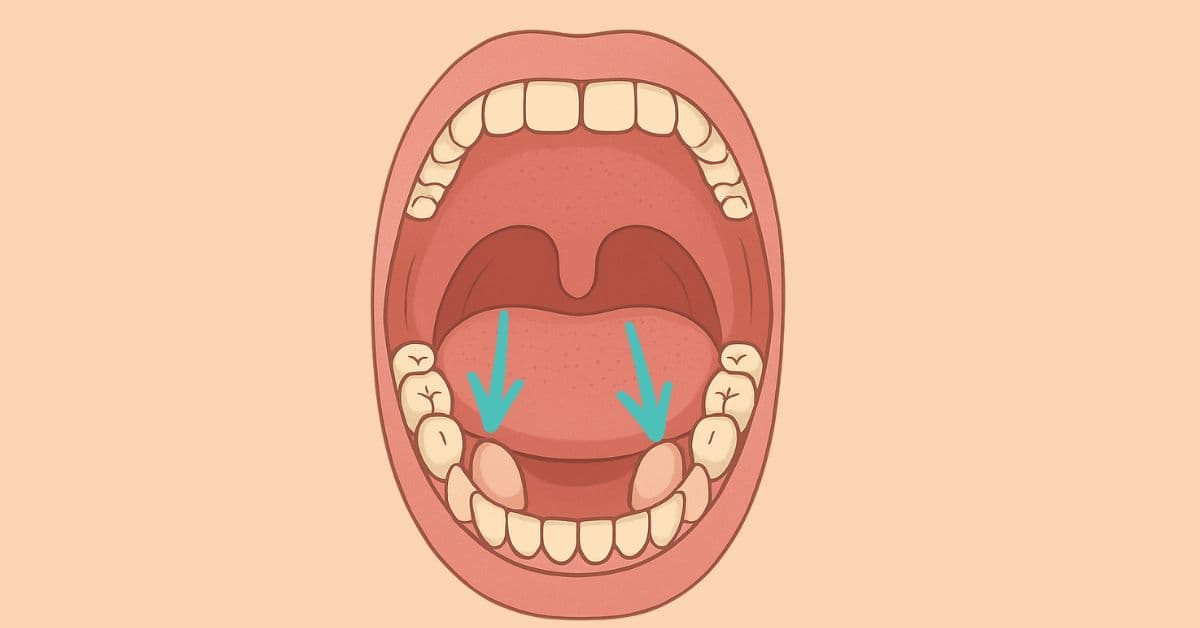Torus mandibularis: this is a fairly common anomaly, but it remains an unknown term!
Let us then go on to see what it is all about.
What is torus mandibularis?
The torus mandibularis is a protuberance appearing in the jaw and in the jaw, especially in the inner part of the mouth, due to a disproportionate bone growth. Generally, involves no risk for the patient and tends to be harmless, although in some cases treatment is necessary.
There are two types of torus mandibularis:
- Torus Maxilar: whether it is located in the upper area near the palate (commonly located in the center of the palate). Its shape and size tend to vary, but it can be shaped like a line across the entire palate.
- Torus Mandibularis: found in the lower part of the mouth can occur in a wide variety of shapes and sizes, going so far as to be asymmetrical. Sometimes it does not have a homogeneous shape but has small bumps scattered in the mucosa.
What causes torus mandibularis?
There are numerous causes That can originate torus, such as:
- Stress and bruxism: Clamping teeth in a prolonged manner over time can promote disproportionate bone growth. Therefore, patients with bruxism or people experiencing high-stress situations are more vulnerable to this oral abnormality.
- Blows or trauma: if a person receives a severe impact or very painful trauma to the mouth, the bone structure may be affected and begin to hypertrophy.
- Difficulties in theTemporomandibular Joint (ATM): the abnormalities in the development of the TMJ directly damage the opening of the oral cavity and also affect the bone. In some cases, inadequate formation of this joint may be the main cause of the occurrence of torus mandibularis.
Is it dangerous to have torus mandibularis?
The torus mandibularis does not involve any danger for the patient's oral health, and sufferers generally lead completely normal lives. It consists of a harmless overgrowth that only on rare occasions causes long-term difficulties. Therefore, if torus causes discomfort, it may require, in the most extreme cases, a surgery to resolve it.
Possible complications of torus mandibularis
Le complications that may occur due to the torus mandibularis Are:
- problems in speaking, because if the torus is too prominent the patient will have difficulty in speaking correctly. This happens especially when the torus is located in the lower part of the mouth and ends up preventing proper tongue movement, complicating phonation
- Difficulty in oral hygiene due to the irregular shape of the torus, which can make difficult daily oral hygiene, causing, for example, bad breath. It is important to pay attention to this part of the oral anatomy, using, if necessary, a pressure washer to properly clean the area
- problems with removable dentures as the torus could affect their proper fit. If this is the case, it is critical that the person consult their dentist to prevent the dentures from causing injuries or sores due to movement and rubbing.
Treatment to eliminate torus mandibularis
The torus mandibularis is harmless, so there is no need to treat it. If the dentist determines that Its size is very large and causes difficulties in the patient's life, action may have to be taken.
The treatment for eliminate torus consists of partial or total removal of bone: the surgery is performed under local anesthesia To prevent the patient from experiencing any kind of discomfort or pain.
[Medical Director: Dr. Mauro Savio, Member of the Dentists Register Provincial Order of Surgeons and Dentists of Milan n. 4168].

